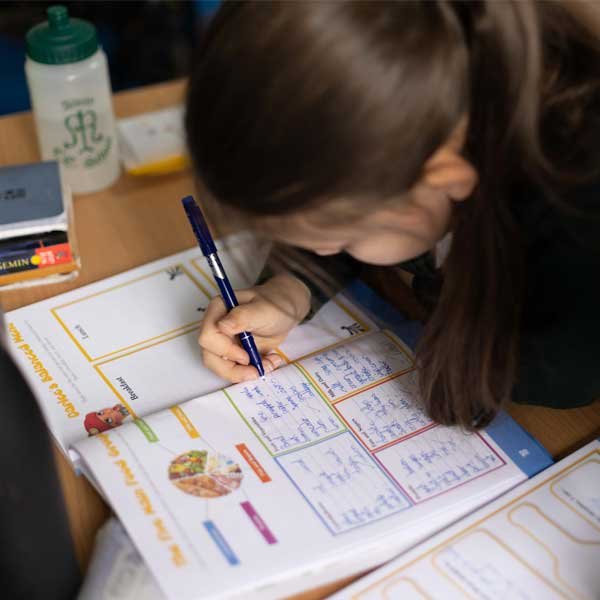In the realm of education, the significance of primary resources and early years workbooks cannot be overstated. These foundational materials form the bedrock upon which young minds begin their journey of discovery and learning. In this blog, we delve into the diverse landscape of primary resources and workbooks, exploring their pivotal role in shaping the educational landscape.
Diverse Range of Primary Resources:
Primary resources come in various forms, spanning across disciplines such as history, science, literature, art, and more. Historical primary resources may include original documents like letters, diaries, photographs, and artifacts that provide firsthand accounts of past events. Scientific primary resources encompass research papers, lab reports, and data sets that contribute to our understanding of the natural world. Artistic primary resources comprise paintings, sculptures, and musical compositions that offer insights into different cultural expressions and historical periods. By exposing students to these authentic materials, educators provide them with a direct connection to the subject matter, fostering a deeper understanding and appreciation for the world around them.
Engaging with Primary Resources:
Engaging with primary resources goes beyond passive learning; it involves active inquiry, critical analysis, and interpretation. Students are encouraged to ask questions, examine evidence, and draw conclusions based on their observations. For example, studying a historical primary resource like a letter written during the American Civil War allows students to explore firsthand accounts of the era, analyze the perspectives of individuals involved, and evaluate the impact of historical events on society. Similarly, engaging with scientific primary resources such as research articles enables students to understand the process of scientific inquiry, evaluate experimental methods and results, and draw evidence-based conclusions. By engaging with primary resources, students develop essential skills in research, critical thinking, and communication, preparing them for success in academia and beyond.
Benefits of Early Years Workbooks:
Early years workbooks are designed to cater to the specific needs and developmental stages of young children, typically ranging from preschool to early elementary grades. These workbooks cover a wide range of subjects, including literacy, numeracy, science, social studies, and more, providing a holistic approach to early childhood education. Through engaging activities, colorful illustrations, and interactive exercises, workbooks capture children’s attention and spark their curiosity, making learning a fun and enjoyable experience. Moreover, workbooks offer opportunities for repetition and practice, reinforcing key concepts and skills in a structured and systematic manner. By incorporating play-based activities, hands-on experiments, and real-world scenarios, workbooks stimulate children’s imagination, creativity, and problem-solving skills, laying a solid foundation for future academic success.
Personalized Learning Experiences:
One of the key advantages of primary resources and early years workbooks is their ability to accommodate diverse learning needs and preferences. Educators can tailor these materials to suit the individual interests, abilities, and learning styles of each child, creating personalized learning experiences that cater to their unique needs. For example, a workbook on math concepts may offer different levels of difficulty to accommodate students with varying skill levels, while a history lesson may include multimedia resources like videos and interactive timelines to appeal to visual and auditory learners. By providing choice and flexibility in learning materials, educators empower students to take ownership of their learning journey, fostering a sense of autonomy and independence.
Promoting Social and Emotional Development:
In addition to academic learning, primary resources and early years workbooks play a crucial role in promoting social and emotional development in young children. Many workbooks incorporate themes of empathy, cooperation, and resilience, helping children develop essential social and emotional skills that are critical for success in school and life. Through storytelling, role-playing, and group activities, children learn to express their emotions, communicate effectively, and navigate social interactions with confidence and empathy. Moreover, workbooks often include activities that promote mindfulness, self-regulation, and positive thinking, empowering children to manage stress, build resilience, and develop a positive outlook on life. By integrating social and emotional learning into academic curricula, educators create nurturing and supportive environments where children can thrive academically, socially, and emotionally.
Conclusion:
In conclusion, primary resources and early years resources workbooks are invaluable assets in the educational toolkit, offering a wealth of opportunities for learning, discovery, and growth. From engaging with authentic historical artifacts to exploring hands-on activities in workbooks, children are exposed to a rich tapestry of experiences that ignite their curiosity, foster their creativity, and nurture their social and emotional development. As educators, parents, and caregivers, let us harness the power of these resources to inspire and empower the next generation of lifelong learners.
